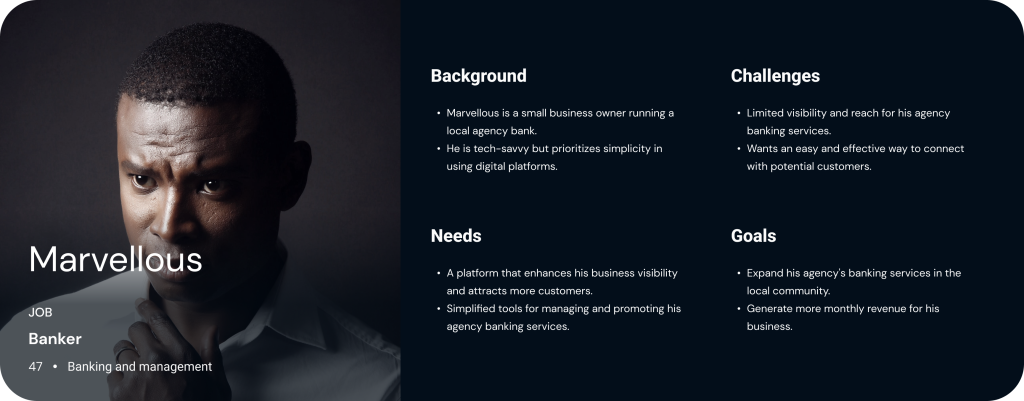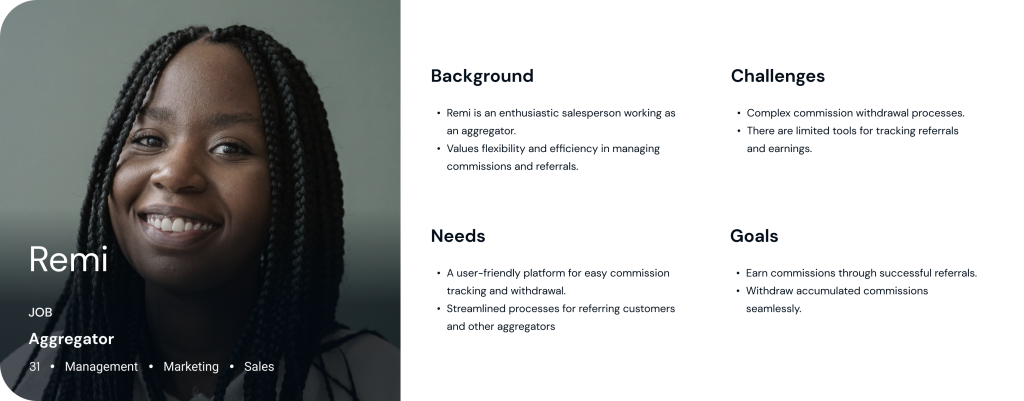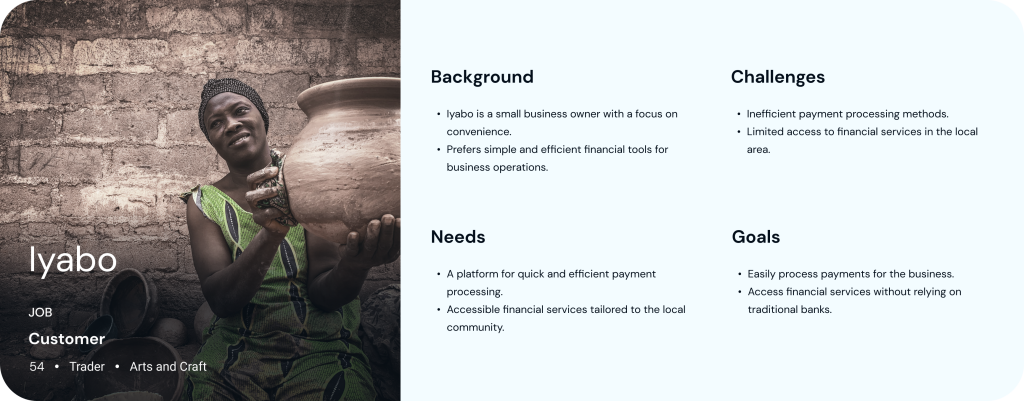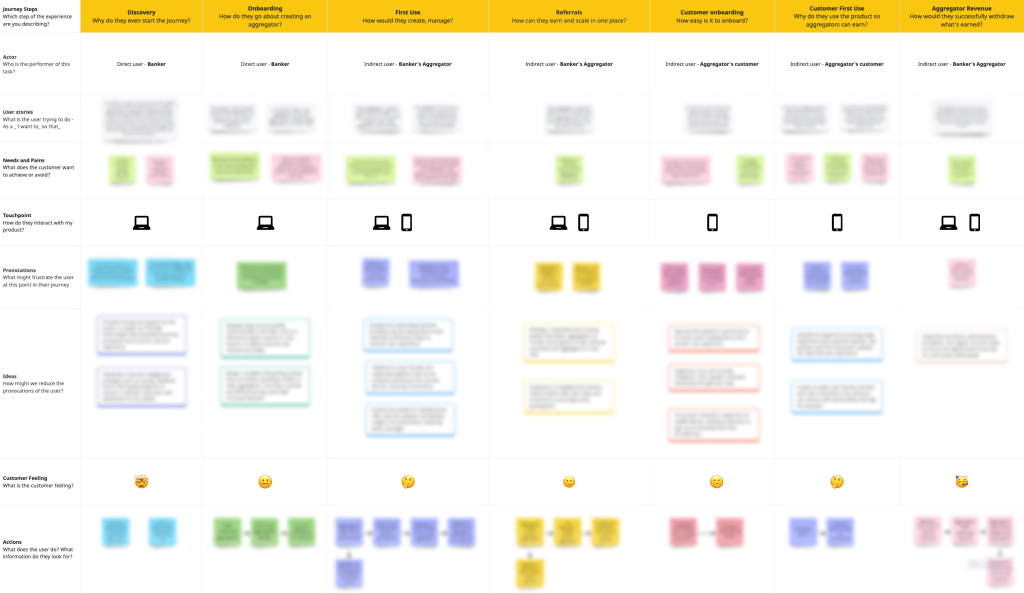Building an Aggregator Model for Increased Revenue
The Challenge
Grupp is a leading banking-as-a-service platform that connects users—business merchants, point-of-sale agents, and more—to customizable payment infrastructure APIs. To help small businesses scale and boost their revenue, we introduced the Sales Aggregator Chain-Model, a feature designed to enhance our platform’s scalability and efficiency.
Development Journey
As the product lead, I initiated a collaborative brainstorming process to identify and address critical user needs. We validated our concept through in-depth discussions with potential users, gathering feedback that confirmed the viability of our solution. This strong market validation facilitated stakeholder buy-in and streamlined the adoption process.
Key Challenges and Solutions
- Challenge: One major challenge was ensuring seamless integration of the Sales Aggregator feature with existing systems while maintaining performance and security.
- Solution: We addressed this by conducting thorough testing and adopting a phased rollout approach, which allowed us to identify and resolve integration issues early.
Bringing the Model to Life
The Sales Aggregator feature enables bankers to onboard and manage aggregators who, in turn, oversee businesses and transactions. These aggregators can further onboard new aggregators, expanding their network and earning commissions on transactions. This chain model was instrumental in enhancing our payment infrastructure’s adoption and effectiveness.
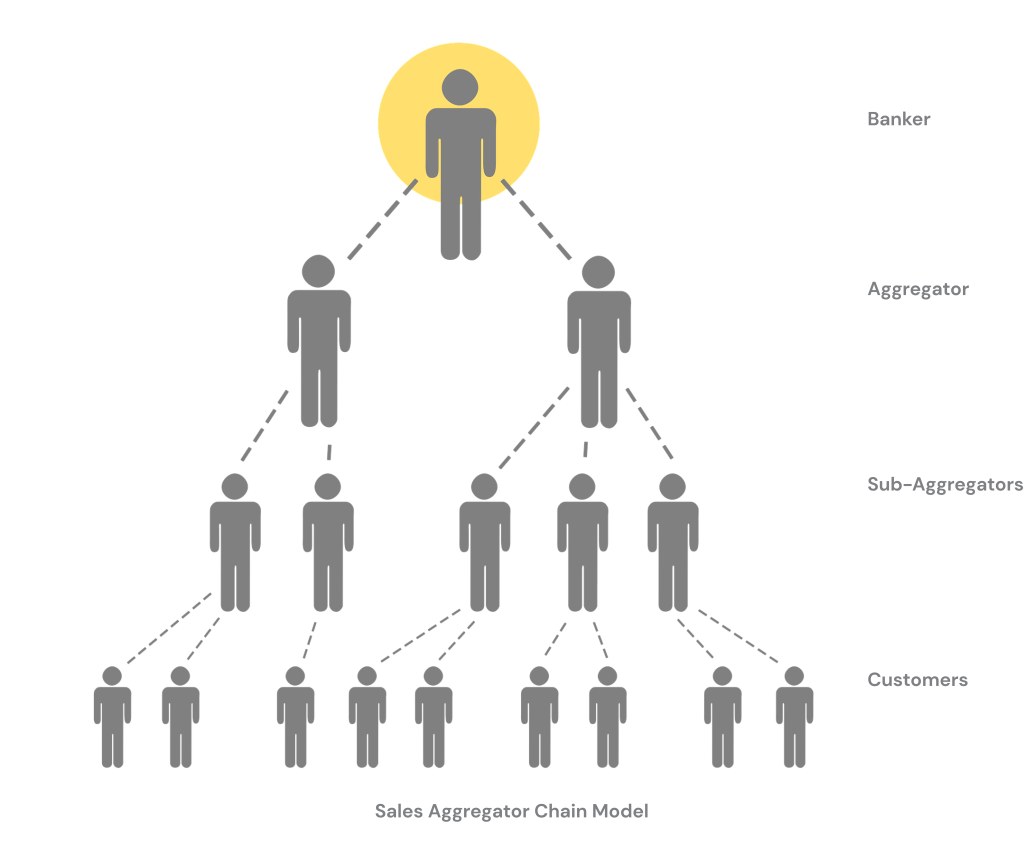
Strategic Prioritization
To prioritize features effectively, I employed the MoSCoW and RICE frameworks. Here’s how we approached feature prioritization:
- Must-Have: User-Friendly Dashboard for Aggregators (RICE: High reach, high impact)
- Should-Have: User Support and Training for Aggregators (RICE: High impact, moderate reach)
- Could-Have: Advanced Analytics for Aggregators (RICE: Confidence-dependent, impact-driven)
- Won’t-Have: Integration with Cryptocurrency Transactions (RICE: High effort, potentially lower impact)
Stakeholder Engagement
Throughout the project, I maintained regular communication with stakeholders through structured meetings and updates. We created feedback loops that allowed us to make timely adjustments based on stakeholder input, which was crucial in aligning the project with business goals.
Lessons Learned
- Key Takeaway: One significant lesson was the importance of iterative feedback loops. Engaging users early and often helped us refine the feature and avoid major issues.
- Application: This experience reinforced the value of continuous user engagement, which I now incorporate into all stages of product development.
User Feedback and Iteration
- Feedback Process: During beta testing, we actively solicited feedback from bankers and aggregators to understand their experiences and identify areas for improvement.
- Improvements Made: Based on this feedback, we improved the user interface and streamlined the onboarding process, resulting in a more intuitive user experience.
Team and Collaboration
- Team Dynamics: I led a cross-functional team including developers, designers, and marketing professionals. By fostering open communication and collaboration, we ensured that all perspectives were considered and integrated into the final product.
- Impact of Team Efforts: This collaborative approach was key to overcoming challenges and achieving our project goals efficiently.
Future Vision
- Next Steps: We plan to introduce additional features to support advanced analytics and integration with emerging payment technologies.
- Long-Term Impact: These future plans are expected to further increase user engagement and drive long-term growth for our platform.
Results
Sales Aggregator Onboarded
Successfully onboarded over 1000 aggregators in just 6 months, validating the dashboard’s effectiveness and team work.
Product Visibility
Enhanced product visibility and market presence by 30%.
Revenue Increase
Boosted monthly revenue by 20% through a 45% increase in customer engagement.
Increased Customer Signups
Achieved a 32–41% increase in customer signups, compared to the typical 16–21% monthly rate.
